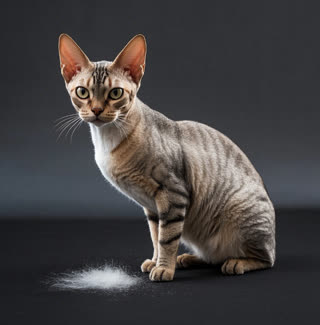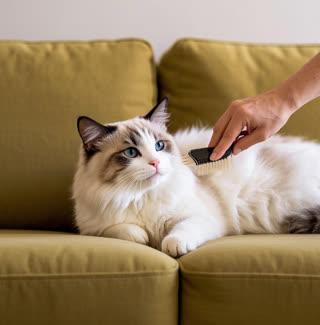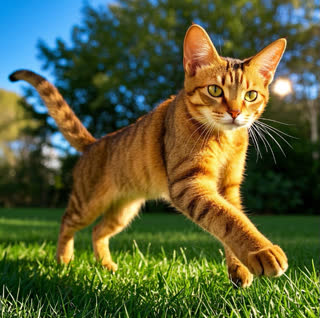Cats are mysterious, elegant, and endlessly fascinating—but how much do you really know about your feline companion? Cat facts unlock the secrets behind their quirky behaviors, ancient instincts, and biological marvels. Whether you’re a seasoned cat owner or simply curious, these 10 amazing cat facts will surprise you, challenge myths, and deepen your appreciation for these enigmatic creatures. Let’s dive into the hidden world of cat facts that even devoted "cat parents" often overlook!
1. Cats Spend 70% of Their Lives Asleep
Your cat’s marathon napping sessions aren’t laziness—they’re evolutionary survival tactics. Domestic cats sleep 12–16 hours daily, conserving energy for bursts of hunting activity. This trait dates back to their wild ancestors, who needed rest to stalk prey efficiently.
Light vs. Deep Sleep: Cats spend 75% of sleep in light dozing mode, ready to spring into action. The remaining 25% is deep REM sleep, where twitching paws and whiskers hint at vivid dreams.
Circadian Rhythm: They’re crepuscular, most active at dawn and dusk—prime hunting times in the wild.
Pro Tip: Provide cozy, elevated sleeping spots to satisfy their instinct to survey "territory."
2.Cat Whiskers: Nature's Ultra-Precise Sensor System
Whiskers (vibrissae) aren’t just cute—they’re high-tech tools. Embedded deep in nerve-rich follicles, they detect air currents, measure gaps, and even gauge mood:
Navigation: Whiskers span roughly the width of a cat’s body, helping them judge whether they’ll fit through spaces.
Emotional Barometer: Forward-facing whiskers signal curiosity; flattened against the face indicate fear or aggression.
Cat Fact: Never trim a cat’s whiskers—it disorients them and causes stress.
3. Cats Have a Secret Hunting Language
Ever wondered why your cat chirps at birds? This "chattering" sound mimics prey to lure them closer. Other hunting behaviors include:
The Death Shake: Biting prey and shaking violently severs spinal cords—a wild instinct retained in play.
Gift-Giving: Presenting dead prey isn’t malice—it’s a teaching gesture, like a mother cat training kittens.
Pro Tip: Use puzzle feeders to channel their hunting drive indoors.
4. Their Purrs Have Healing Superpowers
A cat’s purr vibrates at 25–150 Hz, a frequency shown to promote bone density and tissue repair in humans. But purring isn’t just for contentment:
Self-Soothing: Cats purr when injured or stressed, using vibrations to calm themselves.
Communication: Kittens purr to bond with mothers; adults use it to signal non-threats to humans.
Science Spotlight: Studies suggest living with a purring cat may lower human blood pressure and reduce stroke risk.
5. Cats Walk Like Camels and Giraffes
Observe your cat’s gait: they move both right legs first, then both left legs—a "pacing" walk shared with camels and giraffes. This unique stride conserves energy and ensures silent stalking.
Paw Precision: Their digitigrade walk (on toes, not soles) allows lightning-fast sprints and agile jumps.
Retractable Claws: Kept sharp by staying sheathed except during climbing or hunting.
6. They Have a Third Eyelid
The nictitating membrane, a translucent inner eyelid, protects cats’ eyes during fights or dusty explorations. If visible when awake, it could signal illness or dehydration.
7. Cats Can’t Taste Sweetness
Due to a genetic mutation, cats lack taste receptors for sweetness. Instead, they’re wired to crave protein-rich foods—explaining their obsession with meat.
Fun Experiment: Offer your cat a choice between chicken and candy. Spoiler: The chicken wins every time!
8. Their Nose Prints Are Unique
Like human fingerprints, each cat’s nose has a distinct pattern of bumps and ridges. No two are alike—a fact animal shelters use for identification.
9. Ancient Egyptians Worshipped Cats as Divine
Cats were revered in ancient Egypt, associated with Bastet, the goddess of home and fertility. Harming a cat was punishable by death, and families shaved eyebrows to mourn deceased pets.
Historical Twist: The word "cat" derives from the Egyptian "qa’ta", meaning "he who meows."
10. Cats Use Over 100 Vocalizations
While dogs have about 10 vocal sounds, cats use up to 100—tailored to manipulate humans. For example:
The Demanding Meow: Reserved almost exclusively for humans (they rarely meow at other cats).
The “Solicitation Purr”: A high-pitched purr mixed with a cry—evolution’s answer to getting fed at 5 AM.
Pro Tip: Slow-blinking at your cat signals trust, earning you a "cat kiss" in return.
Conclusion: Celebrate the Mystery of Cat Facts
From their biomechanical marvels to historical reverence, cat facts reveal a species as complex as it is captivating. Understanding these quirks fosters deeper bonds and enriches daily life with your feline friend. As the Cat Fact API project reminds us, there’s always more to learn—so keep exploring, sharing, and celebrating these incredible creatures.










